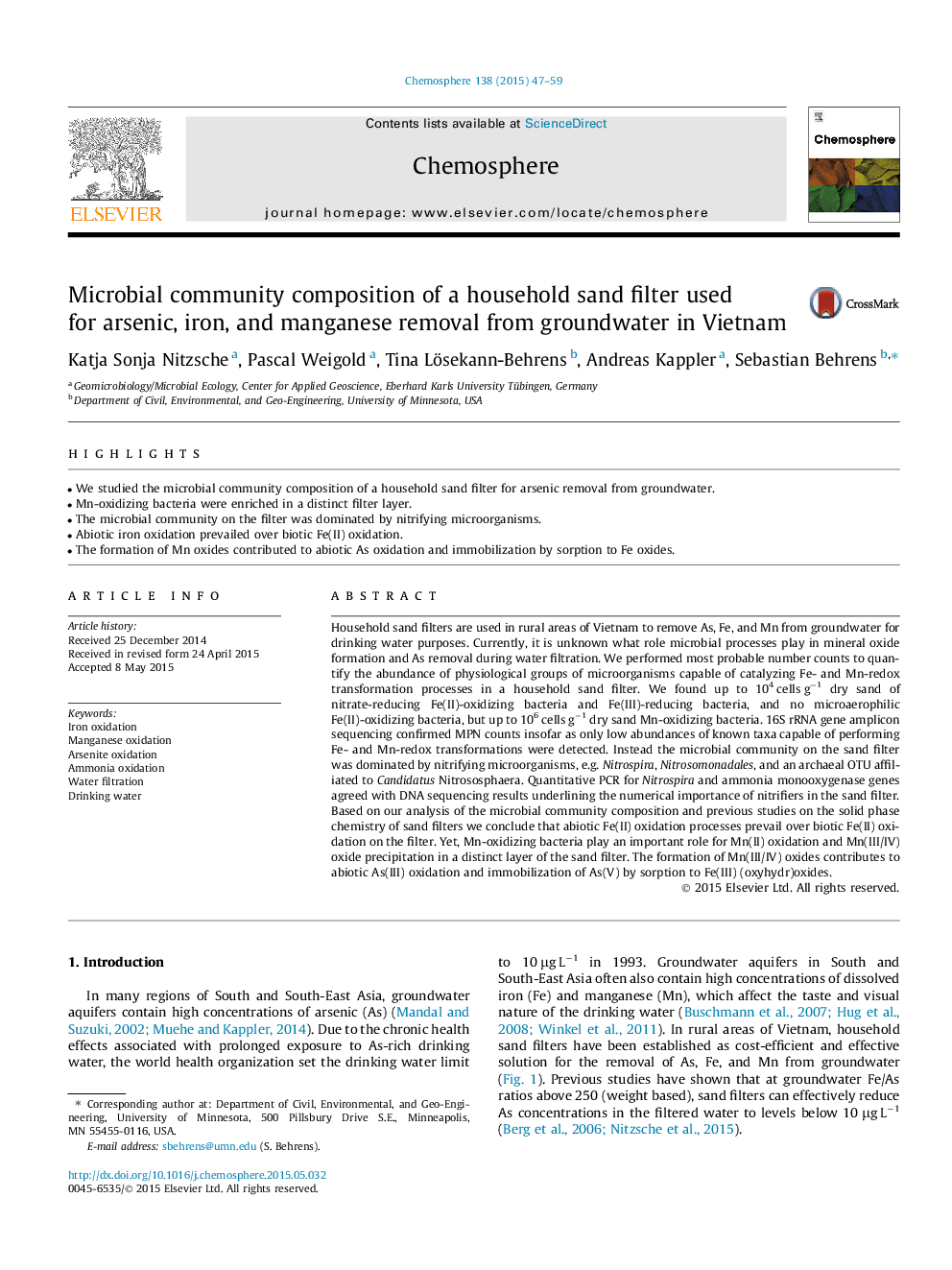| Article ID | Journal | Published Year | Pages | File Type |
|---|---|---|---|---|
| 6307407 | Chemosphere | 2015 | 13 Pages |
Abstract
Household sand filters are used in rural areas of Vietnam to remove As, Fe, and Mn from groundwater for drinking water purposes. Currently, it is unknown what role microbial processes play in mineral oxide formation and As removal during water filtration. We performed most probable number counts to quantify the abundance of physiological groups of microorganisms capable of catalyzing Fe- and Mn-redox transformation processes in a household sand filter. We found up to 104 cells gâ1 dry sand of nitrate-reducing Fe(II)-oxidizing bacteria and Fe(III)-reducing bacteria, and no microaerophilic Fe(II)-oxidizing bacteria, but up to 106 cells gâ1 dry sand Mn-oxidizing bacteria. 16S rRNA gene amplicon sequencing confirmed MPN counts insofar as only low abundances of known taxa capable of performing Fe- and Mn-redox transformations were detected. Instead the microbial community on the sand filter was dominated by nitrifying microorganisms, e.g. Nitrospira, Nitrosomonadales, and an archaeal OTU affiliated to Candidatus Nitrososphaera. Quantitative PCR for Nitrospira and ammonia monooxygenase genes agreed with DNA sequencing results underlining the numerical importance of nitrifiers in the sand filter. Based on our analysis of the microbial community composition and previous studies on the solid phase chemistry of sand filters we conclude that abiotic Fe(II) oxidation processes prevail over biotic Fe(II) oxidation on the filter. Yet, Mn-oxidizing bacteria play an important role for Mn(II) oxidation and Mn(III/IV) oxide precipitation in a distinct layer of the sand filter. The formation of Mn(III/IV) oxides contributes to abiotic As(III) oxidation and immobilization of As(V) by sorption to Fe(III) (oxyhydr)oxides.
Keywords
Related Topics
Life Sciences
Environmental Science
Environmental Chemistry
Authors
Katja Sonja Nitzsche, Pascal Weigold, Tina Lösekann-Behrens, Andreas Kappler, Sebastian Behrens,
